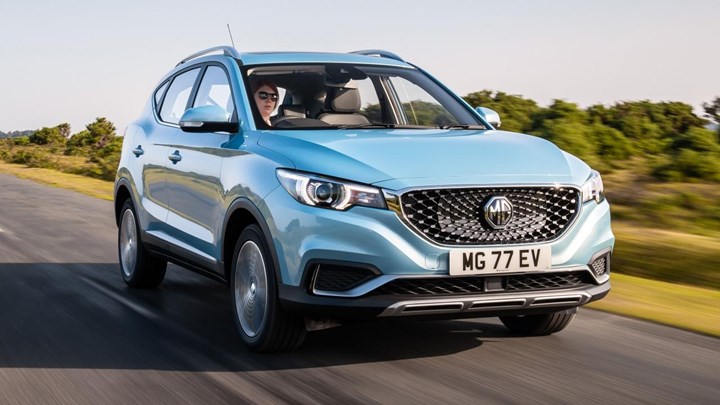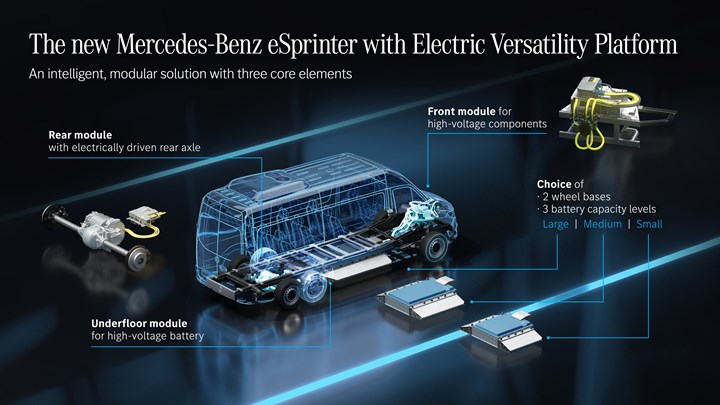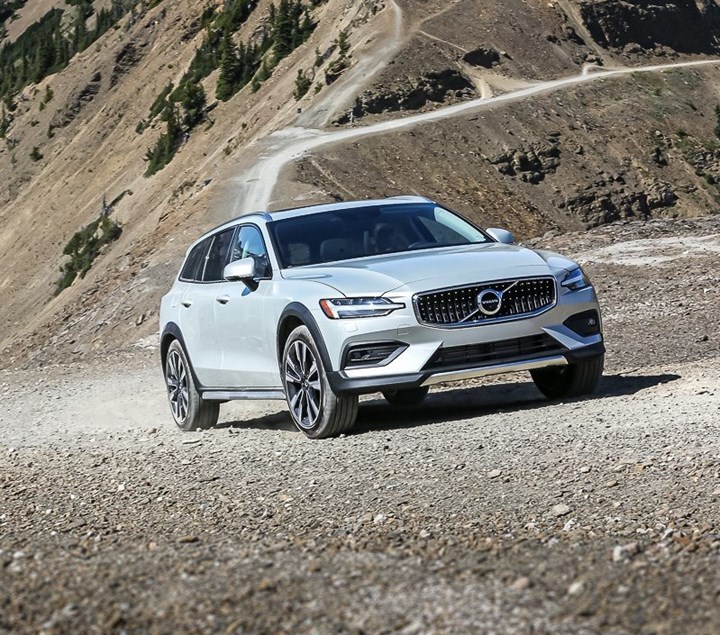On EV Charging, Cleaner Gasoline, the Electric Hummer and More
Developments in EV charging, European sales, cleaner gasoline, vehicle manufacturing in China, the electric HUMMER, the Volvo V60 Cross Country—and more
First, let me thank all of you who are reading this. One hopes that it will become something of a habit. If you have any suggestions, recommendations or tips for daily living, you can send them my way at gsv@gardnerweb.com And please let others know they can get on the list for this newsletter (for free) by going to this page. Thanks.
This week On Automotive:
- The EV Achilles Heel
- Average Ages
- Age May Be Similar, But Size. . .
- Chinese Contract Manufacturers
- The Hydrogen Future
- Cleaner Fuel?
- A Quick Look at the Mercedes Electric Van Platform
- HUMMER EV Notable Numbers
- 2021 Volvo V60 Cross Country T5 AWD
///
The EV Achilles Heel

BMW and Daimler’s Digital Charging Solution app. Now bp is in, too. (Image: Daimler Mobility)
A problem with electric vehicles has little to do with the vehicle part of the vehicles. It’s the electric part.
Specifically, the charging of the vehicles.
Quick: think of four gas stations near where you are right now.
Quick: think of four EV charging stations--anywhere.
In the U.S. Electrify America, which is a consequence of the penalties being paid by Volkswagen for Dieselgate (initial funding from the 2016 diesel emissions settlement: $2-billion), has been collaborating with other OEMs, like Stellantis to setup charging stations out in the wilds for Jeep, Hyundai, to provide buyers of 2021 Kona Electric and Ioniq Electric models with an incentive (free 250 kWh of electricity), as well as the same for purchasers of the Ford Mustang Mach-E.
GM is working with EVgo, “the nation’s largest public fast charging network for electric vehicles, and the first to be powered by 100% renewable energy,” to build out more stations.
It is all about infrastructure.
In Europe there’s been an interesting development.
BMW and Daimler Mobility created a company named Digital Charging Solutions (DCS).
DCS provides software that allows chargers to “recognize” vehicles. Plug in and that’s it. No need to even swipe a credit card. The software is offered to other OEMs as well as fleet owners.
DCS is enabled on 228,000 charging points in 32 countries.
Beyond petroleum. bp—the company formerly known as “British Petroleum”—has purchased a 33.3% share of DCS. Now bp’s charging network will be part of the larger DCS network.
Rainer Feurer, senior vice president of Investments at the BMW Group, pointed out, “A sufficient charging infrastructure is key to wider acceptance of electrification.”
[You can stop thinking about the location of charging stations now.]
///
Average Ages
New cars are nice, but. . . The average age of a light vehicle in the U.S. is 11.9 years, according to research performed by IHS Markit and released at the end of July 2020. Presumably there will be a change for this year, undoubtedly a lengthening due to lockdowns and inventory shortages.
Turns out that in the European Union, according to stats from the European Automobile Manufacturers Association, the average age of a passenger car there in 2019 was 11.5 years.
But what is somewhat surprising is the distribution of ages among the EU countries.
Seems like a spread. . . In Lithuania, the average age of a passenger car is 16.8 years.
In Luxembourg it is 6.5 years.
But on average. . . The average age between those two: 11.65 years.
Seems that there is a fairly consistent age for vehicles here and Over There.
///
Age May Be Similar, But Size. . .

Small but popular—in Europe. (Image: Peugeot)
Although Congress passed the Metric Conversion Act in 1975, unlike Microsoft, which was established in 1975, things didn’t work out so well for millimeters and kilograms and the like here in the U.S.
The numbers in that image up there are millimeters.
An inch is 25.4 mm. Which means the wheelbase (2,540 mm) is 100 inches. The length is a bit tricker (4,055 / 25.4 = 159.6 inches).
The point is, the Peugeot 208 is a small car.
Yet according to Peugeot, in January and February it was the best-selling car in Europe.
The best-selling car in the U.S. in January and February was the Toyota Camry.
It has a wheelbase of 111.2 inches and a length of 192.1 inches.
Overall ages may be similar in the U.S. and Europe, but when it comes to the size of vehicles it is another scale entirely.
///
Chinese Contract Manufacturers

The MG ZS Electric. Yes, that’s a British plate. And the MGs are designed in London. But MG is now owned by SAIC. (Image: MG)
When you think about contract manufacturers, it is probably a company like Magna.
In Graz: Magna, at its plant in Austria, is producing vehicles including the Mercedes G-Class, BMW 5 Series, Jaguar E-PACE and I-PACE and the Toyota GR Supra.
It will produce the Fisker Ocean electric SUV.
A different approach. Magna doesn’t have its own models. But in China, companies that do have their own products are doing a significant amount of manufacturing for other OEMs that are arguably competitors.
According to French data and services company Inovev, here are what some Chinese OEMs are manufacturing under license for other OEMs in 2020:
- SAIC: Of its production, 49% is for GM, 38% for Volkswagen and 13% for its own brands Roewe and MG).
- FAW: 48% for VW, 44% for Toyota and 8% for its own models.
- Dongfeng: 45% Nissan, 33% Honda, 9% Kia, 2% PSA and 11% for its own models.
///
The Hydrogen Future

Although that may appear to be a vending machine, it is actually a solid-oxide fuel cell. (Image: Bosch)
The end-game for vehicle propulsion is hydrogen.
(After that, flux capacitors or whatever. . . )
Realize that these vehicles have a fuel cell stack in place of a battery.
Fueling is like pumping gasoline in terms of how it is done and how long it takes.
And range is equal to or better than a comparable vehicle with an internal combustion engine.
Consider: the Hyundai Nexo, a compact crossover, in its upscale trim (Limited), has a range of 354 miles.
A vehicle with a fuel cell is an electric vehicle: the stack creates the electricity that runs the electric motor.
There are challenges. Like minimal availability of fuel stations. Which means a minimal number of vehicles (in the U.S. you’ve got the Honda Clarity, Toyota Mirai and Nexo). Which means a lack of familiarity.
To show that fuel cells aren’t science experiments, Bosch is taking an interesting approach in Bamburg, Germany, where it has a plant that produces solid oxide fuel cells (SOFCs).
At the city’s central bus station (ZOB) it has installed a stationary fuel cell.
The unit is about the size of a large refrigerator. It generates enough electricity to power some 20 four-person households in the neighborhood.
Explains Dr. Michael Fiedeldey, the managing director of Stadtwerke Bamberg, the city’s public utility, “We want everyone to be able to experience the new technology for themselves. That’s why we didn’t hide it away in some basement, but instead installed it in the middle of the ZOB, which is a traffic hub visited by over 20,000 people a day.”
Once COVID restrictions are lifted there are plans to have tours for those interested.
Although the play here is for clean, distributed power generation, familiarizing commuters with the stationary fuel cell can certainly benefit automotive implementation.
///
Cleaner Fuel?

Porsche is working with ExxonMobil to develop a cleaner fuel, which it will test next year in racing. (Image: Porsche)
While on the subject of hydrogen (as well as an excuse to run a photo of a Porsche), ExxonMobil and Porsche announced that they’re testing “eFuel.”
Explains Michael Steiner, Member of the Executive Board, Research and Development of Porsche, “eFuels are a good complement to our powertrain strategy. They allow our customers to drive cars with conventional combustion engines as well as plug-in hybrids with significantly lower greenhouse gas emissions.”
But what’s eFuel? It starts with hydrogen, which is then combined with carbon dioxide from the atmosphere. This combination produces methanol. Methanol is then converted into gasoline.
This gasoline results in a greenhouse gas emissions reduction of 85% compared with existing fuel grades.
It is anticipated they will have 130,000 liters of eFuel produced in 2022. It will be used in the 2022 Porsche Mobil 1 Supercup race series to prove out its performance.
///
A Quick Look at the Mercedes Electric Van Platform

The Mercedes eSprinter platform for commercial vehicles. (Image: Mercedes)
Mercedes-Benz spent 350 million euros on developing the “Electric Versatility Platform” for Mercedes-Benz Vans’ eSprinter.
These are commercial vehicles, by and large.
Want to know where electric vehicles are going to be big? Consider the number of packages you had delivered by FedEx, USPS, Amazon, UPS, etc. this past year.
Yes, commercial vehicles.
Not all EVs built the same. Unlike “skateboards,” the EVP has three separate elements, not a single slab.
- Front module. It contains the high-voltage elements (e.g., charging components; DC/DC converter). This is a uniform module regardless of the wheelbase, battery size or body style.
- High-voltage battery module. There are three battery capacities, which means three different sizes. There are setups to provide for two different wheelbase lengths.
- Rear module. This is the propulsion unit: an electrically driven rear axle. According to Mercedes-Benz Vans, “all model variants—from panel vans and people movers to chassis-cab variants for box bodies—can be seamlessly implemented using a single platform.”
Mercedes has high confidence in the demand for the EVP-based eSprinter.
Making it. It is going to be producing the vehicles in three plants:
- North Charleston, South Carolina
- Düsseldorf, Germany
- Ludwigsfelde, Germany
It will invest €50 million in each plant for the new vehicle.
Production of the vehicles will occur in the second half of 2023.
///
HUMMER EV Notable Numbers

Imagine: A HUMMER that stickers at $110,595. At least you’ll save on fuel as it is electric. (Image: GMC)
“GMC’s HUMMER EV SUV offers an exceptional balance of on-road performance and off-road capability, enhanced by a unique structure that allows for our signature open-air experience. New features debuting on the SUV reinforce its role as a tactical tool in almost any situation.,” said Al Oppenheiser, HUMMER EV chief engineer.
Here’s something to know about Oppenheiser: He’d been the chief engineer of the Camaro.
Perhaps that goes to explain why the vehicle has an estimated 0 to 60 mph time of 3.5 seconds.
Some other numbers to know:
- 110,595. Price, in dollars, of the HUMMER EV SUV Edition 1 with available Extreme Off-Road Package
- 830. Horsepower.
- 11,500. Lb-ft of torque
- 3. Number of motors.
- 20. Modules in the Ultium battery system.
- 280+. Range, in miles.
- 35.4. Turning circle, in feet.
- 112,595. Price, in dollars, of the HUMMER EV Pickup Edition 1. The reservations for the pickup, announced before the SUV, are full.
The pickup version is to launch this Fall as a MY 22 vehicle. The Edition 1 SUV will launch in early ’23.
///
2021 Volvo V60 Cross Country T5 AWD

The Volvo V60 Cross Country. It does have an off-road mode. (Image: Volvo)
There is a joke among auto journalists about what the ideal is for real-world use, rather than spending the day running at Laguna Seca:
A wagon with a manual transmission and a diesel engine.
There are two things that make this funny.
- Many automotive journalists don’t buy cars, so this is really an imaginative proposition.
- The sales of wagons, manuals and diesels are pretty much infinitesimal, not the sort of thing that OEMs can make much on.
But some companies keep making wagons because they actually have some takers in other parts of the world.
Like Volvo.
One out of three
The V60 Cross Country doesn’t have a diesel.
It is powered by an in-line, 2.0-liter four-cylinder turbocharged engine that uses gasoline (premium recommended) that produces 250 hp.
The V60 Cross Country doesn’t have a manual.
It has an eight-speed automatic. (Yes, there are shift paddles. But no third pedal.)
The V60 Cross Country is a wagon.
Interesting number
OK. This is a “Cross Country” variant. Not the plain V60. One thing that means is standard AWD. Another is that there is an increased ground clearance by three inches. The Cross Country is at 8.3 inches of ground clearance.
The Jeep Cherokee Trailhawk has a ground clearance of just 0.4 inches more (standard suspension).
Sticking with the ute
The Jeep has something else going for it.
Both vehicles seat five.
But the Cherokee has more cargo volume: 25.8 cubic feet behind the second row and 54.7 cubic feet with seats folded.
The numbers for the Cross Country are 23.2 cubic feet and 50.9 cubic feet, respectively.
But. . .
The V60 drives like a car, not an SUV.
Yes, there is an off-road mode you can select. It adjusts the throttle, steering, electronic stability control and other settings.
It can be set at speeds of 12 mph and under. If the vehicle exceeds 25 mph, the off-road mode is shut off.
This really is a car, not an SUV.
Interior impresses
The thing about the V60 Cross Country where you realize that you’re not in the station wagon that you may vaguely remember from your youth is the superb level of materials, fit, finish and seat comfort on the inside.
Funny thing: Volvo was fairly early with the installation of its “Sensus” nine-inch touch screen in the center of the IP that is used for the adjustment of everything from HVAC to radio station, from navigation to going through the owners manual.
Somehow that screen is so well integrated into the design, it doesn’t have the obviousness that some screens have in vehicles, screens that seem to have been superglued on to the IP.
It is very nice in there.
RELATED CONTENT
-
Choosing the Right Fasteners for Automotive
PennEngineering makes hundreds of different fasteners for the automotive industry with standard and custom products as well as automated assembly solutions. Discover how they’re used and how to select the right one. (Sponsored Content)
-
Things to Know About Cam Grinding
By James Gaffney, Product Engineer, Precision Grinding and Patrick D. Redington, Manager, Precision Grinding Business Unit, Norton Company (Worcester, MA)
-
GM Is Down with Diesels
General Motors is one company that is clearly embracing the diesel engine.


.jpg;width=70;height=70;mode=crop)






